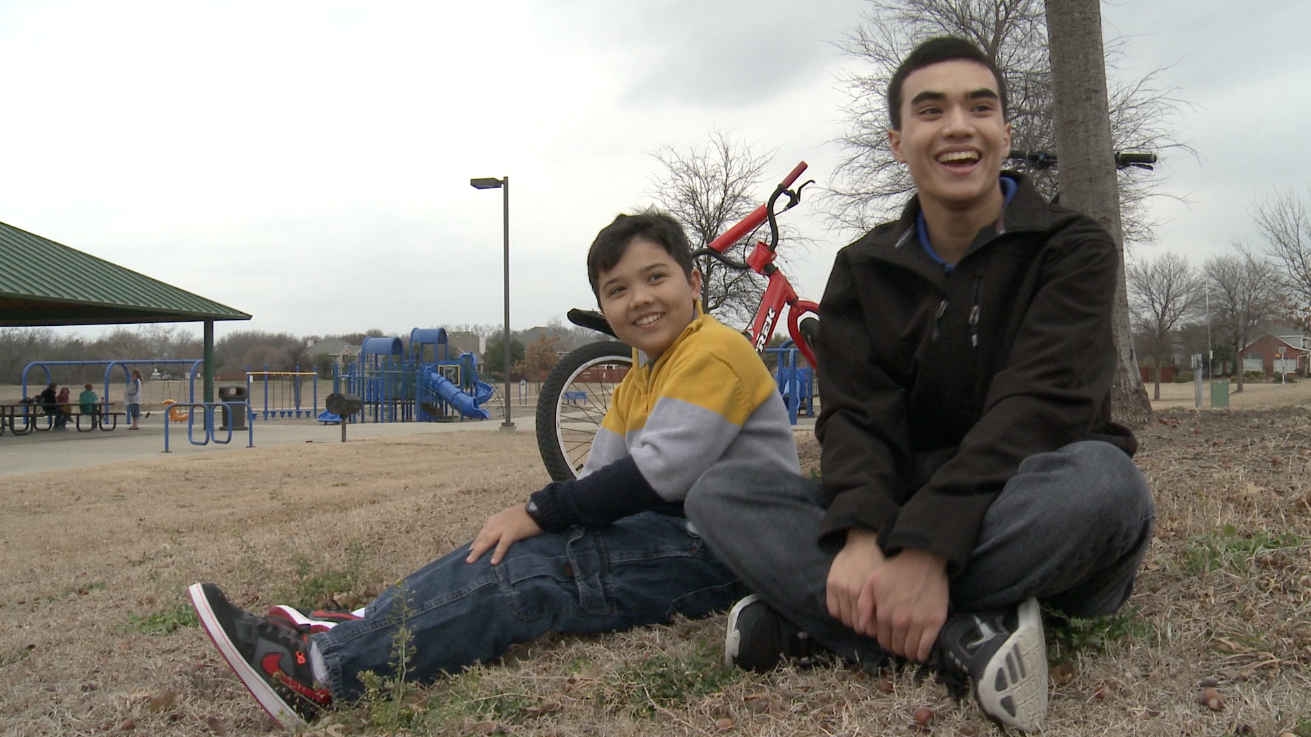 Jude and Joshua Cobler, before Jude's leukemia relapsed. Photo/Mark Birnbaum
Jude and Joshua Cobler, before Jude's leukemia relapsed. Photo/Mark Birnbaum
After Transplant, Brothers Form Unbreakable Bond
Jude Cobler’s bone marrow transplant changed him physically, by altering his blood type. And emotionally, too, by creating an unbreakable bond with his brother, who helped save his life. For Jude and other cancer patients, a bone marrow transplant is really just the beginning.
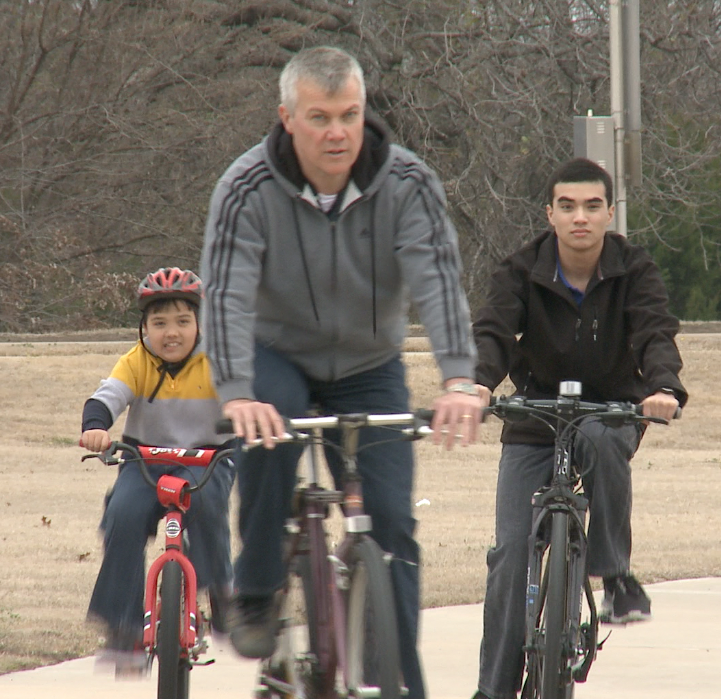
From left: Jude, Keith and Joshua Cobler on a recent bike ride in Plano. Photo/Mark Birnbaum
One recent afternoon, the Cobler brothers hopped off their bikes. The wind whipped everything around.
Joshua, who’s 16, tried to pat down his little brother Jude’s wild helmet hair. Then, they faced off in a typical sibling contest: Who can throw pebbles farther across a small park in Plano.
“Yes!” they yelled.
The two boys look different. Older brother Joshua has short curly hair and a thin face. Jude has a straight cut and a round face.
But, inside, they’re more similar than you could imagine.
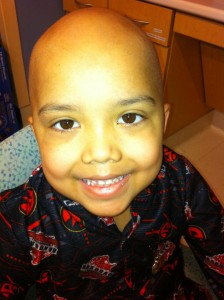
Jude Cobler received chemotherapy — but the chemo didn’t work. Photo/Courtesy Cobler family
Five years ago, Jude was diagnosed with Acute Lymphoblastic Leukemia or ALL. Chemotherapy didn’t work, and he needed a bone marrow transplant. But that wasn’t simple. His dad, Keith, is white. His mom, Boots, is from the Philippines. Being a mixed-race couple poses a challenge. Of the approximately 16 million volunteer donors on the national Be The Match registry, just 3 percent identify as mixed race.
Patients are more likely to have a successful bone marrow transplant when they match someone with a similar ancestry, according to Be The Match.
Joshua ended up being a match – he donated his bone marrow to help save his brother’s life.
The transplant transformed Jude’s body. His blood type changed – from type A to his brother’s type O blood.
The transplant also forever changed Jude’s relationship with his brother.
“I call my brother Kuya — it means big brother in Tagalog,” Jude says.
Jude says he looks up to Joshua.
“He has a lot of straight As,” Jude says. “I want to be just like him. I’m going to work as hard as I can to be exactly like him.”
A Life-Threatening Complication
The two boys are close now, but cancer tested their relationship. Their parents essentially lived at the hospital. Joshua was 12 and barely saw them.
“It’s only been within the last few years that my parents found out I was mad at my brother or I was mad at everything that was going on,” Joshua said.
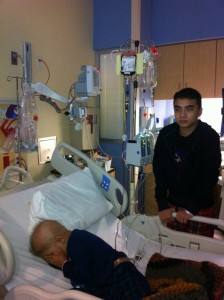
Joshua Cobler often visited his younger brother, Jude, in the hospital. Photo/Courtesy Cobler family
Many nights, he cried himself to sleep.
“I actually didn’t like going to the hospital,” Joshua said. “I tried to stay away from it as much as I could. … If I could I just wouldn’t go. But I had to because I know that my brother was there. “
Jude was 6 at the time. His pain was physical, and life-threatening.
Days after receiving his brother’s bone marrow, Jude began turning yellow with jaundice. His abdomen swelled taut like a drum.
One of Jude’s doctors, Victor Aquino, who specializes in bone marrow transplants, gathered Keith and Boots Cobler, along with those involved with Jude’s medical care.
He told the family that Jude had veno-occlusive disease. It causes blood to pool in the abdomen, which is why it swelled, Aquino says.
Some people in the hospital started calling Jude the “5 percent kid.”
“We knew for [veno-occlusive disease] there was a 5 percent chance of survival sometimes when you get really sick like that,” Aquino says.
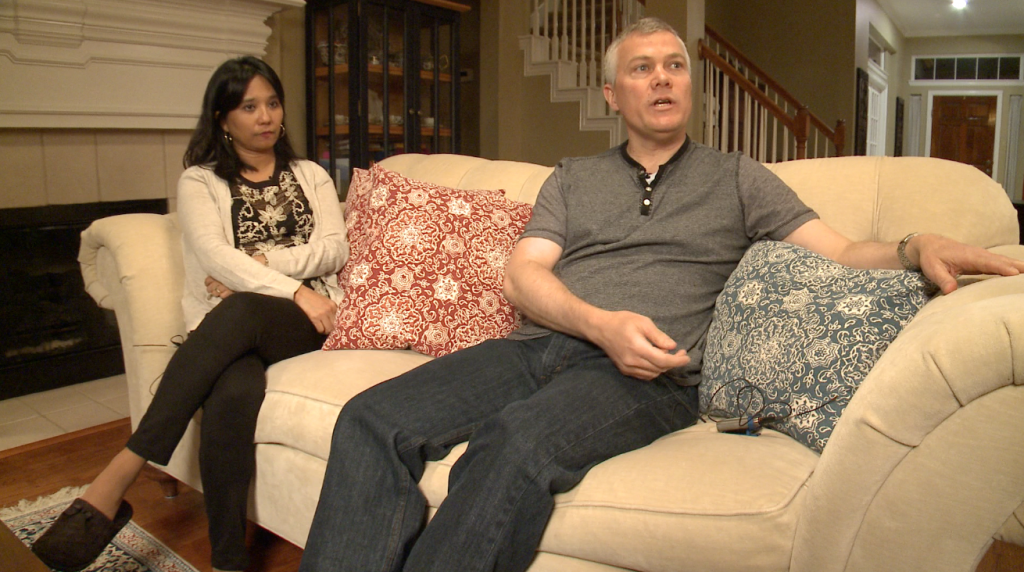
Jude’s parents Boots and Keith Cobler. Boots kept a journal during Jude’s diagnosis, treatment and recovery. Photo/Mark Birnbaum
The Darkest Moment
Veno-occlusive disease is rare, and it’s just one of the many possible complications from a bone marrow transplant. But the disease can be fatal.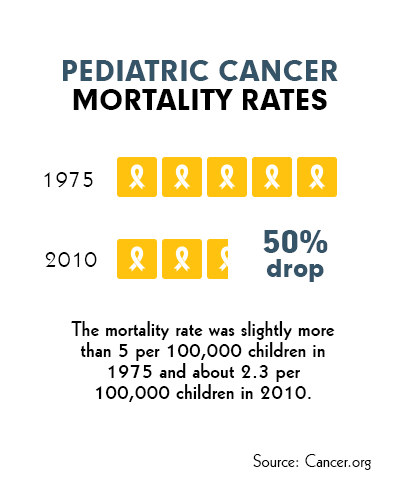
“His liver starts to inflame, and while it inflames he gets these small blood clots in these tiny little veins in the liver,” said Patrick Leavey, one of Jude’s doctors at Children’s Medical Center in Dallas. “All of a sudden, the liver gets congested and bogged. And it can’t work.”
Jude’s mom, Boots, kept a journal during his treatment.
“Yesterday they took out another 1850cc of fluid in his stomach,” she wrote on Jan. 12, 2011. “We haven’t stopped crying and worrying. We have watched our son suffer everyday for a week. Why can’t we just have a smooth bumpy road not a wild bumpy road with uncertainties of where our journey will take us. Why is it that we are getting the 5% of the statistics and not the 95%? … Many of you have said that God won’t give you any more you can’t handle, but I feel like I’m running on empty now.”
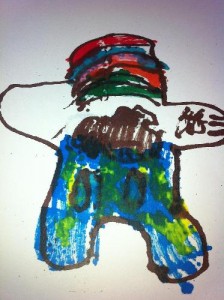
Jude drew this picture while in the hospital. Photo/Courtesy Cobler Family
The Cobler family has a deep Catholic faith. For Jude’s dad, Keith, that had always been a source of strength and optimism. Even after chemotherapy didn’t work – and when Jude’s chances of surviving leukemia dropped from 80 to 20 percent. Even when there was only one possible bone marrow donor.
This complication, though, was Keith’s darkest moment.
“You’d already threaded the needle two or three times to get to this point,” he said. “And then it appears like that all is lost at that point.”
There’s a drawing Jude did while he was in the hospital, a sort of self-portrait. It’s an outline of a little boy with a black and brown storm cloud hovering in his stomach. Blue rain falls from the waist down and fills the legs like buckets.
In the boy’s head, above the storm, there’s a rainbow.
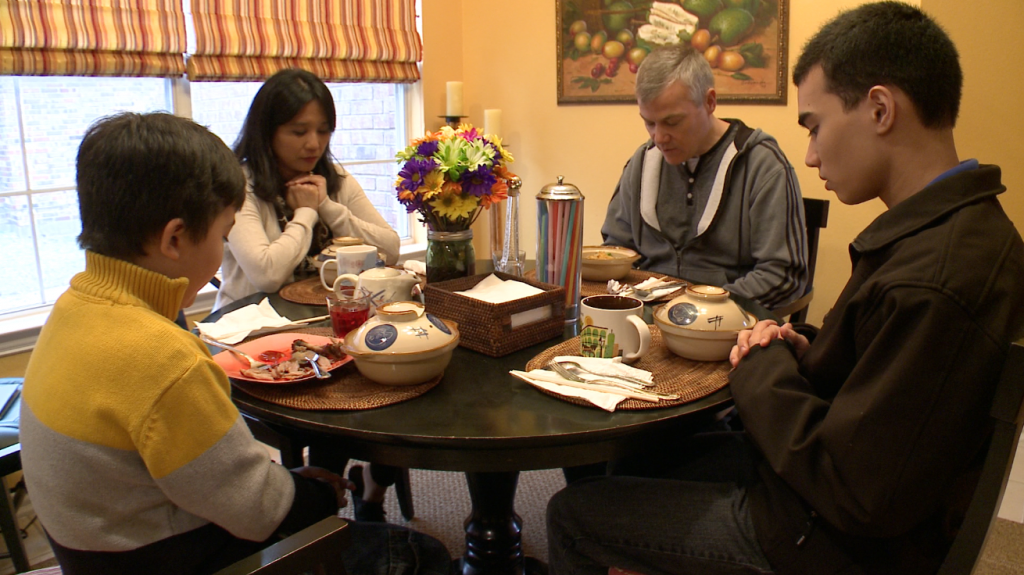
The Coblers have a deep Catholic faith — a faith that was tested during Jude’s cancer diagnosis, treatment and recovery. Photo/Mark Birnbaum
‘We Really Did Become Closer’
After about a month, Jude’s liver started working again. The bone marrow from his brother was settling into his own system, and growing.
“He did OK,” said Aquino, one of his doctors. “He beat lots of odds to make it to where he is today.”
And the bond between the brothers was cementing.
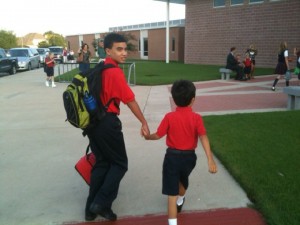
Joshua Cobler with his brother, Jude. Photo/Courtesy Cobler family
“After he got out of the hospital, we really did become closer,” Joshua said. “It’s hard to explain how exactly but it is just a feeling I can tell. And I think after you see someone you love about to die and go through these times where you don’t know whether you’ll see them ever again, I think you really have to become closer after.”
Now, of course, the boys fight like any siblings.
But their mom, Boots, says there’s a twist.
“When he would get mad at Joshua, he’ll say something like ‘I don’t care if you saved my life, I hate you!’”
There’s been a lot of laughter in the years since Jude recovered from leukemia. Still, cancer has left its mark, changing Jude’s personality, his fears, and his dreams for the future.
COMING UP
A transplant saved Jude Cobler’s life, but it would change him — and his family — forever. It’s also shaped Jude’s dreams for the future. Read the final chapter of Growing Up After Cancer.
Also, meet other North Texans who have survived childhood cancer.

